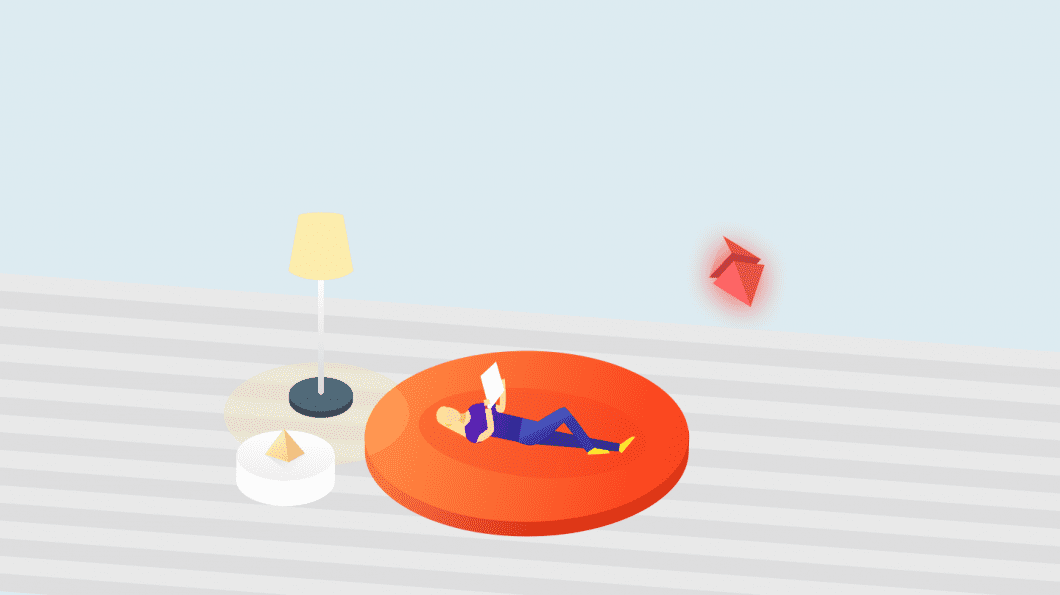When Francesco Cirillo first invented the pomodoro technique as a university student in the 1980s, he probably didn’t realize that he’d started a time management revolution that we’d still be talking about today. But, in fact, Cirillo managed to tap into a productivity method that works seamlessly with the natural ebb and flow of our attention. And, as our attention spans naturally grow shorter by way of social media and short-form entertainment like TikTok videos and blogs, the pomodoro method may even be able to help us bridge the gap between our current misfiring attention issues and the laser-like focused deep work where real productivity magic happens.
But what exactly is the pomodoro technique? How does it work? What makes it so special? And how can it help you focus better on your work? Let’s explore all of that.
What Is the Pomodoro Technique?
The pomodoro technique of productivity is a time management method that consists of 25-minute periods of deep work, called pomodoros, followed by 5-minute breaks. After four pomodoros, you take a longer break—usually 15 to 20 minutes. The name itself comes from the tomato-shaped timer Cirillo originally used to keep track of his work sessions. “Pomodoro” is the Italian word for “tomato!”
During a pomodoro session, you dedicate 100 percent of your focus to one specific task, which you determine ahead of time. It can be anything; clearing out your inbox, writing up next year’s business plan, or finishing that project you’ve been putting off. Whatever you choose, the point is not to let anything else sidetrack or distract you. One common way to fight distractions is to use a distraction log. This can be a notebook or just a simple scrap of paper. When a distraction arises, write it down to address during your next break. Then get right back to work!
Your break periods can also be whatever you need them to be. Run to the bathroom, get something to drink, stretch and move around, or any combination of those things. The point is to stop working and do anything not related to your work for a few minutes.
But wait, isn’t that counter-productive? If you want to be focused on deep work, why take so many breaks? While hours-long deep work sessions have their place, shorter bursts of effort with breaks in between are also incredibly valuable, for reasons we’ll explain below.
Why Does the Pomodoro Technique Work?
There are two main reasons that the pomodoro technique is so effective for getting things done.
It’s Easy on the Brain
One way to think about how we focus is to compare it to how we sleep. Our brains go through different phases of sleep, starting in lighter phases and moving through to deeper ones. Light sleep is easy to wake from, while deep sleep can be harder, more jarring, and leave us feeling groggy and cranky. You can’t skip around phases, either; if you’re woken from a deep sleep and want to go back to sleep, you have to start the process all over again, no matter where you were when you woke up.
Focus works almost identically. When you first get started on a project, you’re more susceptible to distractions, but you bounce back from them more easily. As you dive deeper into our work, however, even a little distraction can completely derail you, and it can take a long time to return to your previous flow state, assuming it’s possible at all, because you have to “start focusing” back from the beginning.
Pomodoros still give you a chance for deep work, but it’s more of a deep work lite, which can be far less intimidating than a four-hour nonstop focus session might be. Distractions are less threatening when you can just write them down and deal with them in 20 minutes. And if an interruption does “wake you” out of your focus session, it’s not that hard to jump back in.
Frequent Breaks Help You Recalibrate
It’s fair to assume that those constant short breaks would hurt your focus, but the truth is, they can actually help! Your idle time is more valuable than you realize. Time you spend actively not thinking about your work actually gives your brain a chance to unconsciously mull over problems, just like the elves from the Brothers Grimm’s story The Elves and the Shoemaker, working tirelessly behind the scenes each night to help the shoemaker craft beautiful shoes.
Another way to think of it is like High-Intensity Interval Training, or HIIT. During training intervals, you push yourself and give your workout everything you’ve got, but the rest intervals are just as important. Without them, you’d burn out or hurt yourself, and the workout wouldn’t be as efficient.
That’s why it’s so important for your breaks to be specifically unrelated to your work. Your mind needs those few minutes to recover so that your next pomodoro session will be that much more effective.
It can also be a very useful time to get up and move around a bit if you’ve been sitting during your pomodoro session. Your body will thank you!
How to Use the Pomodoro Technique at Work
The pomodoro technique can be a great time management tool for the workplace. Not only is it a handy way to focus on shorter tasks, it can be a good way to break up bigger, longer-term projects into more manageable steps.
Here are a few ways to bring the pomodoro technique to your workplace:
Have Pomodoro Meetings
Use the pomodoro technique to time your meetings. It’ll keep distractions to a minimum and give antsy coworkers a chance to get up and stretch their legs without causing disruption.
Host Pomodoro Work Hours
Set up a pomodoro timer in the office and have everyone work on their own projects until time is up. During breaks, coworkers can mingle and discuss what they’re working on. If your company likes a little friendly competition, maybe see who can accomplish the most before the session is over!
Challenge Workers to Log Their Time
By tracking the number of pomodoro sessions it takes to complete tasks, employees will have a better understanding of how their time is being spent at work. Once they know that, they’ll be able to work toward using their time more efficiently.



